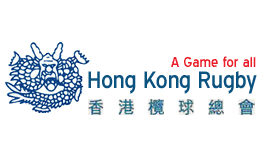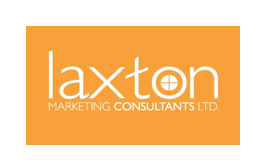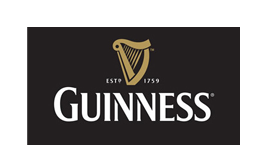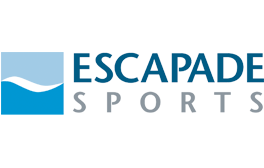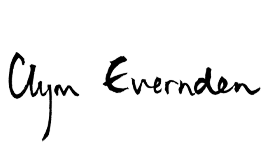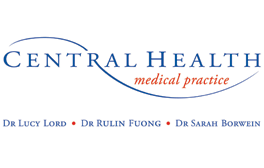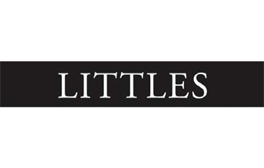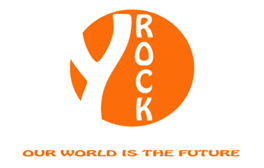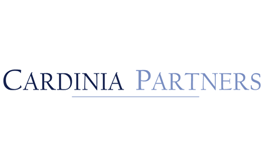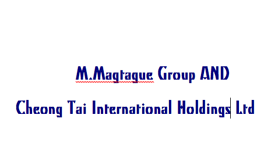STEM CELLS: HOPE, HYPE AND PROGRESS
by Jennifer Bovard
I represented the Ben Kende Foundation at the Australian stem cell conference in August 2011 which took place in several venues around Australia (I attended the session held in Brisbane)
The main speakers were Professor Rasko, Dr Megan Munsie and Dr Mackay Simms, whose research work I had recently read
While stem cell therapy is seen as having revolutionary possibilities for disease and for people who have spinal cord injury, peoples’ expectations are running high and it was often the topic of discussion when my son was in rehab.
Dr Munsie gave a concise yet thorough background to the nature of stem cells that are used in therapy.
She explained the different approaches. Embryonic stem cells (each the size of a pinhead) are taken from embryos that are to be discarded in fertility clinics. Cells are extracted from these human embryos and encouraged to grow where they are transplanted by injection. These cells can grow in every part of the body. Millions of cells are used to help the neurons connect to each other and to repair the shredded network of nerves that traverse the spinal cord and carry the messages to the body, arms and legs.
Embryonic cells are known to grow indefinitely and the downside here is that, if unmonitored, they can form growth cells in different parts of the body, like tumors, which are called teranomas.
Recent trials at Geron were stopped by the FDA when they found transplants were forming clusters in the spines of the animals they were testing.
It was also explained that we can now make cells from a person’s own cells so that there is less chance of immune mismatch and less risk to the person’s immune system. For example, cells can be taken from the nose (olfactory) as it reproduces very fast
Induced Pluripotent cells (IPS) are non-embryonic cells and can replace damaged cells in a person’s body and can act like embryonic cells, but this is a relatively new field of stem cell research.
In Hong Kong, Professor Wise Young in conjunction with Hong Kong Spinal Cord Injuries Association and Hong Kong University, are leading the way with umbilical cord stem cell. This is blood collect from the umbilical cord at birth. Trials are still going on and some of those trials are combining the drug lithium with umbilical cord stem cell in seeking a cure for paralysis.
As safety is a key issue Dr Mackay Simms spoke of his research into olfactory stem cell therapy, and his findings showed that there were no harmful effects
One of the concerns expressed at the forum was medical tourism, and the trend for people to seek stem cell therapy overseas when it was not yet available at home. They spoke of the need to track people going abroad for stem cell therapy. In fact I have met two people who have had stem cell therapy in Germany and two who have had stem cell in Portugal. The German clinic was closed down as two children with cerebral palsy, who had stem cells injected into the brain, died.
Until we get results from the clinical trials stem cell therapy might still only be anecdotal. For now, it does not make paralyzed people walk again. The people I met who got therapy in Portugal claim they got back their bladder and bowels, and the people from Germany also spoke highly of the treatment, but until we have scientific evidence the jury seems to be out.
In the meantime, we are looking forward to the results of the clinical trials underway in Hong Kong and China by Professor Wise Young
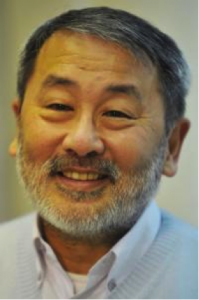 DOCTOR LOOKS TO CHINA FOR SPINAL INJURY ‘CURE’
DOCTOR LOOKS TO CHINA FOR SPINAL INJURY ‘CURE’
2012-03-07 11:38
Doctor Wise Young speaks during an interview in Hong Kong. Doctor Young, a leading researcher in spinal cord injuries says China could hold the key to a cure that he has been searching for since he met late actor Christopher Reeve in the 1990s. Photo courtesy: AFP
Doctor Wise Young smiles during an interview in Hong Kong. Doctor Young, a leading researcher in spinal cord injuries says China could hold the key to a cure that he has been searching for since he met late actor Christopher Reeve in the 1990s. Photo courtesy: AFP
by Stephen Coates
HONG KONG, March 7, 2012 (AFP) – One of the world’s leading researchers into spinal cord injuries says China could hold the key to a cure that he has been searching for since he met late actor Christopher Reeve in the 1990s.
US-based Doctor Wise Young first used the word “cure” in relation to his work after a conversation with Reeve, the “Superman” hero who became quadriplegic in an equestrian accident in 1995.
Reeve contacted him looking for help and the two became close friends. The actor died of heart failure in 2004 at the age of 52, having devoted his life to raising awareness about spinal cord injuries and stem-cell research.
But it was a star of a different sort, Chinese gymnast Sang Lan, who set Young on the path he believes has brought a cure closer than ever, thanks to ground-breaking clinical trials of stem-cell therapy he is conducting in China.
“Everybody assumed that I’m doing this in China because I wanted to escape George W. Bush, but that’s not the case at all,” Young told AFP in an interview, recalling the former US president’s 2001 decision to effectively stop Federal funding of embryonic stem cell research.
“I started the clinical trials in 2005 here in Hong Kong … mainly because of a promise that I made to a young woman. Her name is Sang Lan.”
Sang crushed her spine during a routine warm-up exercise at the Goodwill Games in New York in 1998. She met Young as she underwent treatment and rehabilitation in the United States over the next 12 months.
“Her parents came to me and asked whether or not there would ever be a cure for her, and I said we’re working very hard on it,” recalled Young, who was by then one of the leading US experts on spinal cord injuries.
“When she went back to China after doing her rehabilitation in New York she cried and asked how would therapies go from the United States to China.
“In those days China was still relatively poor and backward so she didn’t think that any therapy would be coming from China. So I started in 1999 to talk to all the spinal cord doctors in China.”
He said the result was China Spinal Cord Injury Net, the world’s largest clinical trial network for spinal cord therapies. Established in Hong Kong in 2005, it is about to expand into Europe, India and the United States.
“We’re testing umbilical cord blood-cell transplants into the spinal cord combined with lithium treatments,” said Young, professor in neuroscience at Rutgers University, New Jersey.
At about 20 centres in China, Hong Kong and Taiwan, stem cells are injected into patients’ damaged spines to help regenerate nerves, while lithium is used to promote the growth of the nerve fibres.
Each component of the combination therapy needs to be tested separately before they are brought together in the third and final phase, due to take place in the coming years if all goes well.
The results so far have been promising, although it’s “still too early” to draw conclusions about recovery of movement, Young said.
“What we can comfortably say right now is that the procedure seems to be quite safe. Nobody has lost any function,” he added.
“We don’t expect people to be jumping out of bed and running marathons after this. Regeneration is a slow process.”
The trials also involve intensive walking exercises for some of the severely injured participants at the Army General Hospital in Kunming, southwestern China.
In two sessions of three hours each, six days a week, the patients “sculpt” their nerve fibres into shape, Young said. He likened it to running a marathon every day. By comparison, Reeve did about two hours of exercise daily.
“The families are there cheering them on. There’s a mass effect,” said Young in his tiny office in central Hong Kong, where he was born into a business family in 1950.
“They are joshing with each other, saying ‘I’m going to beat you today’. There’s that kind of atmosphere that allows you to do it six hours a day, and once it becomes a routine you keep going.”
One of the tragic and little-known side effects of the country’s booming economy is the rise in car accidents and construction site accidents, leading to soaring numbers of spinal injuries.
China’s rate of chronic spinal cord injuries has increased more than 10-fold since 1995, and another 80,000 people are added to the list every year, according to Young.
Growing demand for therapies has led some unscrupulous Chinese researchers to offer stem-cell treatments at high prices, without any clinical proof that their methods are effective.
But Young said such problems existed everywhere. For him, the real story about China is how it has gone from the backwater of Sang Lan’s day to a country at the cutting edge of spinal cord research.
Chinese government spending on biomedical research is at least on a par with the United States, and the legal framework governing its clinical standards is second to none, the doctor said.
“It’s turned 180 degrees from the time Sang Lan was asking how will therapies get to China. Now Americans want to go to China,” Young said.
“This is not what I would have said to Sang Lan back in 1998, but it is possible that the cure for spinal cord injury will actually come from China.”
Young does not use the word “cure” lightly.
“Before I met (Reeve) I was very reluctant to use the word cure… It’s very scary to use because when you use the word cure you’re committing yourself to a goal that most scientists feel uncomfortable with,” he said.
“We’re not going to be able to make the body exactly the same as it was before the injury.
“What we should do is get (patients) to a point where you can’t tell that they have been injured, and I think that is an achievable goal.”
ADULT STEM CELL RESEARCH GOES FORWARD IN LEAPS AND BOUNDS WHILST EMBRYONIC STEM CELL WORK GRINDS TO A HALT
By Dr. Peter Saunders
LAST PLACE FOR EMBRYONIC STEM CELL TREATMENTS
It has been an amazing week in the field of stem cell technology with five big stories hitting the news all at once. New doors of therapeutic promise are opening whilst at the same time other doors are slamming shut… But the speed of new developments has increased by leaps and bounds just in the last few days.
Stem cells are naturally occurring cells in the body which have the capacity to develop into a variety of specialist cells. They have been recognized for well over a decade as having huge potential in the treatment of diseases where is there is tissue or cell loss-such as diabetes, Parkinson’s disease, spinal injury, and heart disease.
The reason embryonic stem cells are so controversial is that the harvesting of embryonic stem cells involves the destruction of existing embryos and yet some American scientists have for years maintained that they are essential for research.
On the other hand, other scientists have argued that adult stem cells are safer than embryonic stem cells and have greater therapeutic potential. Both adult stem cells (from bone marrow and other body tissues) and umbilical stem cells are already used in treatment for a wide variety of hematological and other conditions and over 100 diseases around the world. By contrast the first clinical trial using embryonic stem cells has only just recently begun and just as quickly ended.
Embryonic and “embryonic-like” iPS cells have problems of cysts, tumors, genetic anomalies of the donor and requirement of immunosuppressive drugs to mitigate rejection issues.
What has happened this week is that there have been some fantastic advances in using adult stem cells whilst at the same time a huge setback for or more specifically, the death of embryonic stem cell technology. These developments could be the first nail in the coffin for the misinformation and hype that the sick and dying American public have been fed by the FDA, AMA and Corporate-Controlled Media (CCM) on these issues for so long.
Let’s be clear; for the first time in the “10 years behind the times” US medicine, adult stem cells from the patients’ own body have been shown to improve heart failure. Adult stem cells from the patients’ own body have been shown to improve heart failure around the world since 2002. To be clear, there have been earlier ASC successes in America, but none allowed to be publicized in Corporate-Controlled Media.
In the research carried out at the University of Louisville and published in the Lancet, the heart’s blood-pumping efficiency in 14 patients who responded to the stem cell treatment, increased from 30.3% to 38.5% whilst at the same time the amount of dead heart muscle tissue decreased by 24% percent over four months. Seven control patients who did not receive the stem cell treatment showed no improvement.
In Europe, the doctors behind the world’s first transplant of an artificial windpipe made from a patient’s own stem cells are to begin clinical trials next year on a stem-cell ‘bandage’ for mending torn knee cartilage.
In Australia, embryonic-like stem cells have been isolated from breast milk in large numbers. The discovery raises the possibility of sourcing embryonic stem cells for regenerative medicine, without the need to destroy embryos.
Peter Hartmann at the University of Western Australia in Crawley and his colleagues first announced the discovery of stem cells in breast milk in 2008. [http://www.ncbi.nlm.nih.gov/
When “embryonic like” qualities are referenced, it refers to the ability of a stem cell to become all of the cells in the human body or pluripotency. Adult stem cells with pluripotency are highly regarded because they can do everything an embryonic stem cell can do with none of the negative effects. A number of pluripotent ADULT stem cells in the human body have been discovered thereby making embryonic and induced pluripotent stem cells (iPSC) for regenerative treatment 100% obsolete. Adult stem cells derived from mother’s milk are merely the latest to be recognized.
In Los Angeles, Scientists at the Mount Sinai School of Medicine have demonstrated that baby mice in utero can heal their mothers’ heart disease (See ‘Foetal stem cells “can repair mother’s heart”‘). They found that foetal stem cells from the placenta, which they had marked with green fluorescent protein, traveled to the pregnant mother’s heart and were transformed into a variety of cells to repair cardiac damage. This may help to explain a phenomenon seen in previous studies where one in two women with peripartum cardiomyopathy spontaneously recovered after pregnancy. Imagine, adult stem cells from the fetus in a mother’s womb can regenerate and heal illnesses in the mother’s body
The director of cardiovascular regenerative medicine at the institution, Dr Hina Chaudhry, has described it as ‘an exciting development that has far-reaching therapeutic potential’. The findings, which are published in the American Heart Association’s journal Circulation Research, could help researchers find a stem cell treatment for heart disease.
Finally, the company doing the much-heralded first trial on embryonic stem cell therapy is discontinuing further stem cell work. See Geron Gives Up
Geron, a pioneer in stem cell research that has been testing a potential spinal cord injury treatment, said late Monday that it’s halting development of its eight different stem cell programs to conserve funds. It is seeking partners to take on the programs’ assets and is laying off 66 staff, 38% of its entire workforce.
Those scientists who have been singing the praises of embryonic stem cells most loudly are, perhaps predictably, expressing their disappointment. The firm is claiming that its decision is ‘purely financial’ but John Martin, Professor of Cardiovascular Medicine at University College London has said: “The Geron trial had no real chance of success because of the design and the disease targeted. It was an intrinsically flawed study… The first trials of stem cell that will give an answer are our own in the heart. The heart is an organ that can give quantitative data of quality.”
Josephine Quintavalle from the group CORE was rather more frank: “At long last after 10 years of unremitting hype, reality has caught up with embryonic stem cell claims. If Geron is abandoning this project it is because it is simply not working, despite the millions of dollars and hot air that has been invested in the promotion of this research.” Ms. Quintaville properly attacked Geron’s claim of financial issues causing their dropping this hoax hot-potato, rather than the truth, which very well may be that one or more of the patients has suffered a typical result of ESC, such as cancer, or deadly immune rejection.
So in summary, this has been a week where adult stem cell research has marched on whilst embryonic stem cell work has ground to a halt. What were perhaps always blind alleys are now closing but new highways of promise are opening ever and ever wider.
Other Resources


